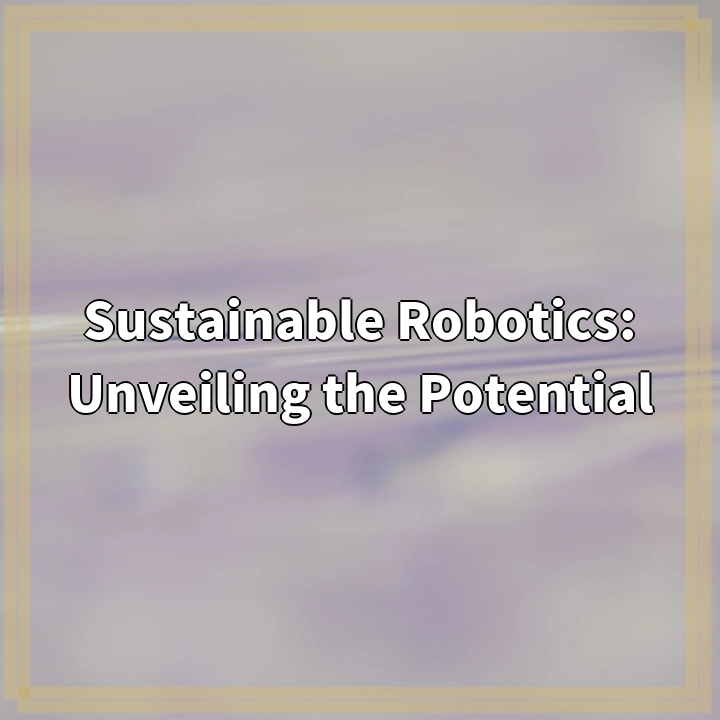
What is Sustainable Robotics?
Sustainable robotics is an emerging field that focuses on the development and application of robotic technologies with a commitment to environmental responsibility and social impact. It encompasses the design, manufacturing, and operation of robots that minimize their negative environmental footprint and maximize their positive contributions to society.
Real-World Problems Associated with Sustainable Robotics
1. Energy Efficiency:
Sustainable robotics aims to address the energy consumption of robotic systems, as traditional robots often rely on fossil fuels or inefficient power sources. By developing energy-efficient robots and optimizing their power consumption, we can reduce the overall environmental impact.
2. Resource Conservation:
The production of robotic systems often involves the use of precious and limited resources. This poses a challenge for sustainability. Finding innovative ways to minimize resource consumption during manufacturing and ensuring the recyclability of robots at the end of their lifespan can contribute to sustainable practices.
3. E-Waste Management:
As with any technological device, robotics can contribute to the growing e-waste problem. Disposal and proper recycling of robotic systems are crucial to prevent harmful effects on the environment and human health. Developing strategies for responsible e-waste management is a significant concern.
4. Social Implications:
Sustainable robotics also addresses social aspects such as job displacement and ethical concerns. As robots and automation become more prevalent, there is a need to ensure that the benefits are equitably distributed and that robotics technology supports rather than replaces human labor. Ethical considerations arise in automated decision-making processes and potential impacts on privacy and security.
In summary, sustainable robotics aims to combine technological advancements with environmental responsibility and social impact. By addressing energy efficiency, resource conservation, e-waste management, and social implications, we can unlock the potential of robotics in a sustainable and responsible manner.

Solutions for Sustainable Robotics
1. Energy Efficiency:
Developing energy-efficient robotic systems by leveraging advanced technologies, such as low-power electronics and energy harvesting mechanisms. Optimizing algorithms and control systems to minimize power consumption and improve overall efficiency.
2. Resource Conservation:
Implementing circular economy principles in robotics manufacturing, using sustainable materials, and designing robots with modularity and upgradability in mind. This allows for easier repair, reuse, and recycling of components, reducing the need for new resource extraction.
3. E-Waste Management:
Creating take-back programs and recycling initiatives to ensure responsible disposal of robotic systems. Designing robots with easily separable components and promoting the use of environmentally friendly materials that can be recycled or safely disposed of at the end of their lifespan.
4. Social Implications:
Addressing the social implications of robotics by investing in programs that foster human-robot collaboration and retraining workers for roles that complement automation. Ethical considerations should be incorporated into the design and implementation of robotics systems to ensure fair decision-making and protect privacy and security.
By implementing these solutions, we can pave the way for a sustainable future in robotics. Embracing energy efficiency, resource conservation, responsible e-waste management, and considering social implications will help unleash the true potential of robotics while minimizing their environmental and societal impact.















